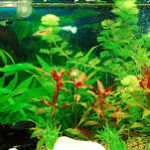DIY White Hair Bows
Why Make Your Own Hair Bows?
Creating hair accessories at home has become a popular trend among crafters and fashion enthusiasts. DIY white hair bows offer a simple yet elegant touch to any outfit, whether for everyday wear or special occasions. Making these bows at home allows for complete customization in size, texture, and embellishments, ensuring a unique accessory that matches personal style. Additionally, crafting hair bows can be a fun and rewarding activity, perfect for beginners and experienced crafters alike.
White hair bows, in particular, are versatile and timeless. They can complement various hair colors and outfits, making them a staple accessory. Whether aiming for a classic, vintage, or modern look, a white bow adds a charming and polished finish. Moreover, handmade bows often cost less than store-bought ones, offering a budget-friendly alternative without sacrificing quality.
Materials Needed for DIY White Hair Bows
Before starting any DIY project, gathering the right materials is essential. For white hair bows, the basic supplies include white ribbon (satin, grosgrain, or lace), scissors, a hot glue gun, a lighter or fray check to seal edges, and hair clips or headbands for attachment. Optional materials include decorative elements like pearls, rhinestones, or small fabric flowers for added flair.
Choosing the right ribbon is crucial. Satin ribbons provide a smooth, shiny finish, while grosgrain ribbons have a textured, matte look. Lace ribbons add a delicate, feminine touch. The width of the ribbon also affects the final appearance—thinner ribbons create dainty bows, while wider ones make a bold statement.
Basic Techniques for Bow Making
The foundation of any hair bow lies in proper folding and securing techniques. The most common method involves creating loops and securing them at the center with a tight knot or glue. Another technique is the “knot bow,” where the ribbon is tied like a traditional gift bow. For a more structured look, some crafters prefer using a bow-making tool or a fork to shape the loops evenly.
Sealing the ribbon edges prevents fraying, ensuring durability. A quick pass over the edges with a lighter or a dab of fray check keeps the ribbon intact. Additionally, using a hot glue gun provides a strong hold, but care must be taken to avoid burns or excess glue marks.
Safety Tips for Crafting
While making hair bows is generally safe, certain precautions should be taken. When using sharp scissors, cutting away from the body prevents accidents. A hot glue gun should be handled carefully to avoid burns, and working in a well-ventilated area is advisable when using adhesives or sealants. Keeping materials organized also minimizes the risk of spills or misplaced sharp objects.
By understanding the basics of materials, techniques, and safety, anyone can start crafting beautiful white hair bows at home. The next sections will delve deeper into different bow styles, step-by-step instructions, and creative variations.
Simple White Hair Bow Tutorial for Beginners
Choosing the Right Ribbon for Beginners
For those new to bow-making, selecting an easy-to-handle ribbon is key. Grosgrain ribbon is often recommended for beginners because its textured surface holds shape well and is less slippery than satin. A medium width, such as 1.5 inches, is manageable and creates a balanced bow. White grosgrain ribbon offers a clean, classic look that suits various hairstyles.
Before cutting the ribbon, measuring the desired length ensures consistency. A standard bow requires about 12 to 18 inches of ribbon, depending on the preferred loop size. Marking the ribbon with a pencil or a small clip helps maintain accuracy before cutting.
Step-by-Step Instructions for a Basic Bow
The first step in making a simple white hair bow is folding the ribbon into two equal loops. Holding the center tightly, the crafter then wraps a thin piece of ribbon or a wire around the middle to secure it. This creates the classic “bunny ear” shape. For a neater finish, a small dab of glue can be applied to keep the center wrap in place.
Next, attaching the bow to a hair clip or headband completes the accessory. Using a hot glue gun, the bow is firmly pressed onto the clip’s flat side. Holding it in place for a few seconds ensures a strong bond. For extra security, some crafters add a small piece of felt over the glued area to prevent any rough edges from touching the hair.
Common Mistakes and How to Fix Them
Beginners often encounter a few challenges when making their first bows. Uneven loops are a frequent issue, which can be avoided by measuring and folding the ribbon symmetrically before securing it. If one loop appears larger, adjusting the folds before gluing helps balance the shape.
Another common problem is excess glue seeping out from the edges. To prevent this, using a minimal amount of glue and pressing quickly reduces mess. If glue stains remain on the ribbon, gently scraping them off with a toothpick while the glue is still warm can salvage the bow.
Ideas for Personalizing Simple Bows
Even a basic white hair bow can be customized to reflect individual style. Adding a small pearl or rhinestone at the center elevates its elegance. For a rustic touch, a piece of burlap or lace can be layered underneath the bow. Those who prefer a minimalist look may opt for a plain white bow with crisp, clean edges.
Another way to personalize a bow is by experimenting with different textures. Combining a satin ribbon with a sheer organza overlay creates depth and visual interest. Alternatively, lightly brushing the edges with glitter glue adds a subtle sparkle without overwhelming the design.
By mastering this simple technique, beginners can build confidence before moving on to more intricate designs. The next section will explore advanced bow styles and creative variations for those ready to expand their skills.
Advanced White Hair Bow Designs
Layered White Hair Bows for a Fuller Look
For crafters seeking a more voluminous bow, layered designs are an excellent choice. This technique involves stacking multiple ribbons of varying widths or textures to create a dynamic, multi-dimensional accessory. A popular approach is combining a wide white satin ribbon with a thinner lace ribbon on top. The layers are folded and glued together at the center, resulting in a luxurious, high-end look.
When working with layered bows, precision is crucial. Each ribbon must be cut and folded uniformly to maintain symmetry. Pinning the layers temporarily before gluing helps in adjusting the positioning without permanent mistakes. Once satisfied with the arrangement, a strong adhesive secures all layers in place.
How to Make a Wired Edge Bow
Wired edge bows are ideal for those who prefer a more structured and adjustable accessory. These bows use ribbon with thin wire along the edges, allowing the loops to be shaped and reshaped as desired. This type of bow is commonly seen in floral arrangements but works beautifully as a hair accessory.
To create a wired edge bow, the crafter begins by gently bending the wire inside the ribbon to form loops. The wire holds the shape, eliminating the need for tight knots or excessive glue. After forming the desired loops, the center is secured with a small piece of ribbon or a decorative clip. The advantage of this design is its flexibility—the bow can be adjusted to sit perfectly in the hair without losing its form.
Incorporating Embellishments for Extra Glam
Adding embellishments transforms a simple white bow into a statement piece. Rhinestones, sequins, and beads can be carefully glued onto the ribbon for a sparkling effect. For a vintage-inspired look, small faux pearls or cameo pendants can be attached at the center.
When working with embellishments, balance is important. Overcrowding the bow with too many decorations may make it appear bulky or heavy. Instead, strategically placing a few well-chosen accents enhances the design without overwhelming it. A single pearl at the center or a line of tiny rhinestones along the edges can make a significant impact.
Troubleshooting Advanced Bow Techniques
Advanced designs may present challenges, such as uneven layering or difficulty in securing wired edges. If layers shift during gluing, using clips or pins to hold them in place until the glue dries prevents misalignment. For wired bows that refuse to stay in shape, twisting the wire ends tightly at the back ensures stability.
Another potential issue is the weight of embellishments causing the bow to droop. Reinforcing the base with an extra layer of ribbon or a sturdy clip helps distribute the weight evenly. If the bow still feels unstable, opting for lighter decorations or reducing their number may be necessary.
By exploring these advanced techniques, crafters can create stunning white hair bows that stand out. The final section will cover styling tips and maintenance to keep handmade bows looking their best.
Styling and Caring for Your DIY White Hair Bows
Best Hairstyles to Showcase Your Hair Bows
White hair bows complement various hairstyles, from sleek ponytails to loose waves. For a polished look, placing a bow on a low bun or braid adds a touch of elegance. Half-up hairstyles with a bow clipped at the crown create a sweet, youthful appearance. Those with short hair can use smaller bows to accentuate bobby pins or headbands.
Experimenting with placement can change the entire vibe of the hairstyle. A bow positioned to the side gives a playful, asymmetrical effect, while a centered bow offers a more classic and symmetrical look. Mixing multiple small bows throughout the hair creates a whimsical, fairy-tale-inspired style.
How to Clean and Maintain Handmade Bows
To keep white hair bows looking fresh, proper care is essential. If the ribbon is made of washable material, gently hand-washing with mild soap and air-drying can remove dust or stains. For delicate fabrics like lace or satin, spot-cleaning with a damp cloth is safer to prevent damage.
Storing bows properly also prolongs their lifespan. Keeping them in a dry, dust-free container or hanging them on a ribbon organizer prevents crushing or discoloration. Avoiding direct sunlight helps maintain the brightness of white ribbons, as prolonged exposure can cause yellowing over time.
Creative Ways to Repurpose Old Bows
If a hair bow loses its appeal, repurposing it into another accessory breathes new life into it. An old bow can be glued onto a plain headband, transforming it into a stylish hairpiece. Smaller bows can be attached to gift wrapping, scrapbooks, or even as decorative accents on clothing.
Another idea is incorporating bows into home décor. A cluster of small white bows can be strung together to create a charming garland for special occasions. Gluing bows onto photo frames or mirror edges adds a delicate, handmade touch to room decorations.
Final Thoughts on DIY White Hair Bows
Making white hair bows at home is a creative and fulfilling hobby that allows for endless customization. From simple beginner designs to intricate layered bows, there is a style for every skill level. By following proper techniques and maintaining the finished pieces, these handmade accessories can remain beautiful and functional for a long time.
Whether crafting for personal use, gifts, or even small business ventures, DIY white hair bows offer a charming way to express individuality. With practice and imagination, anyone can master the art of bow-making and enjoy the satisfaction of wearing or sharing their creations.










